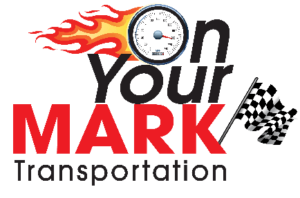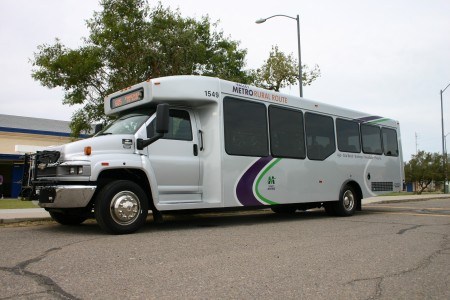The Importance of Video By Sydney Brashear
Video has become a huge part of social media in the 21st century. Not only is video used to capture memories but video is also used for learning and teaching. When trying to study a subject and gather information about something, one often tends to lose focus with reading and writing. Not only do people lose focus with reading and writing but they also might miss information that could be very important. If you were to simply watch a video to learn, the person giving the instruction could put every important detail in that video, make it entertaining and informative to where the viewer is able to learn easier, more efficiently, and not miss out on anything important.
Video doesn’t only have to be for learning. It actually started out for the sole purpose to entertain. Therefore, when people are given an informative video instead of a packet filled with information, they see it as more fun and they are more willing to learn. It is also very easy for a good editor to not only make the video really entertaining, but also make sure all the right information is included in the video. In order to make a good entertaining video, an editor could include, graphics, music, demonstrations, and even more. You can make good entertaining videos long or short. For instance, a company might put a short promo video on Instagram and put the longer, more detailed video on YouTube. It really helps in for the Google Search Engine to rank you higher when you are posting across different platforms.
Almost everyone has a smartphone nowadays. Having these smartphones makes viewing videos extremely easy. You can watch and upload a video anywhere you go at the touch of your fingertips. You can upload any video to YouTube and view it for free. When you upload a video to YouTube it stays there forever unless you decide to delete it. This is great for learning because if you forget something you can pull up that video really quick and get the information you forgot. You can also go back and watch a video over and over again to retain information. With paper, it is easy to get misplaced, get torn up, and it is also worse for the environment.
I encourage everyone to switch over to using video to put out information on all social media sites. It is more efficient, saves time, is more entertaining, and better for the environment.
[/fusion_text][/fusion_builder_column][/fusion_builder_row][/fusion_builder_container]
Interview with WePropelChange.com
Our President/CEO was invited by Donna Griggs, CEO of www.WePropelChange.com to be a guest on her Internet Video programs. Mark spoke on “Emergency Preparedness”. His article in “Chauffeur Driven” magazine on the same topic is listed below. As busy as we are in our organizations, the couple of hours it might take out of a day would be well worth have the preparations in place in case something unexpected happens. Watch the video for some quick ideas on Emergency Preparedness. This is just one of the many services that On Your Mark Transportation offers to our clients! Call us today or fill out the quote request!
Welcome to Our New Website!
 We are proud to introduce our new website! All of our Associates assisted in the development of this site, and would be honored to help your organization create one like this for you. Our Associates did the design, created the text, found corresponding pictures, and created all of the videos you see posted on this website. We are Consultants in the Bus, Motorcoach and Limousine industry. As you review our new website, you will see that we provide consultation in Marketing, Human Resources, Event Transportation Planning, Grant Writing, and writing for responses to quote requests. We have a whole section on clients who have provided us testimonials on our work, so you can be confident that you are receiving knowledge, skills and abilities from people who know your industry in passenger transportation.
We are proud to introduce our new website! All of our Associates assisted in the development of this site, and would be honored to help your organization create one like this for you. Our Associates did the design, created the text, found corresponding pictures, and created all of the videos you see posted on this website. We are Consultants in the Bus, Motorcoach and Limousine industry. As you review our new website, you will see that we provide consultation in Marketing, Human Resources, Event Transportation Planning, Grant Writing, and writing for responses to quote requests. We have a whole section on clients who have provided us testimonials on our work, so you can be confident that you are receiving knowledge, skills and abilities from people who know your industry in passenger transportation.
Our Associates can create a website for your organization as well. Not only do we know how to create a website with quoting forms, pictures, videos and writing the content, our Associates know your industry, and work every day in it. We know the words that not only attract the attention of your client, but also know the words that attract and create a site that will increase Search Engine Optimization. If your organization needs a new website in passenger transportation, the Associates of On Your Mark Transportation can create one you can be proud of, as we are of our own.
We invite you in, look around and see all that we can offer your organization. Please email, or fill out the quote form and we will be happy to be of service. Thank you for visiting!
Preparing For Tomorrow’s Emergencies
As you read this article, you do so knowing that yesterday you did not have to deal with a Fire, Tornado, Disgruntled Employee, or other disaster that easily could have turned your business upside down today. However, by preparing today, although it will not keep a business disaster from happening, it may at least lessen the damages and further mistakes that could make the crisis worse.
Safety and Security Assessment programs are so important to businesses to perform that the Federal Government requires them for most grant applications. In the upcoming round of Security Grants, the Federal Government will want to know that any business making application that the business has created, or has updated their assessment. Many businesses believe that a Security Assessment is just looking about the property and deciding where to place security cameras, or if to put an electronic gate on the fence surrounding the property. A proper Safety and Security Assessment is much more detailed, and down the road, may be vital for proper crisis management as well.
True, one good starting step is to take a moment and look at building security systems. When were cameras updated, repaired, and missing areas of the property updated with additional cameras? Are the systems using good backup recording devices? More than just building and property security, numerous security systems have been used to help find missing persons, or in providing vital clues in other crimes, bringing criminals to justice. In addition, if one of your employees are hurt in a crime that occurs, the question will arise of what you did, or should have done to protect your employees. There is the expectation that your business is a safe place to work. If any outsider can walk onto your property from any direction, the disaster that could occur goes well beyond unwanted graffiti or items stolen from vehicles. Most companies today are providing some type of airport transportation service as part of their overall business plan. When was the last time your drivers were trained in looking for suspicious packages being place in wheel wells of vehicles that could create a disaster at any of our nation’s airports? Terrorists don’t just attack the big cities on the coast, and more and more concern is on the interior cities. Annual trainings on proper searching of vehicles, along with a proper pre-trip is important for the safety and security of your business, your employees, and the communities you serve.
A good Safety and Security Assessment also includes an up to date building draft like the one attached. The building drawing shows more than just exits from the building. It shows where fire extinguishers are, where possible chemicals are stored, and what type they are. Fire and Police agencies need this information, along with whether or not fuel is stored inside and where electrical panels are located. Any pits that could be open in maintenance facilities or where gas lines to heating systems are running are important to identify as well.
Often we hear of workplace violence occurring somewhere in the country, and we think to ourselves how thankful we are that it didn’t happen in our facility. However, are we prepared for if it did? A Safety and Security Assessment will never stop an incident of a disgruntled employee, or a spouse/ex-friend of one of our employees, unless we identity and acknowledge we cannot see the future. Does your business have open access to the office area for anyone to just walk in, or do they have to be allowed in through a security system? If a disgruntled person enters, and begins to use a gun, is there an alert system with a code so all employees are aware of what may be taking place in another part of the building? The chances are so minor of this happening, we as business owners don’t take the time to discuss this openly. However, many police agencies have a community outreach that will provide that information for the business and the employees. This training also needs to take place on an annual basis.
Do you remember all of the Tornado and Fire Drills from our school days? How many school fires have you heard about, or how many schools have had a direct hit by a tornado? Yet, these drills in most schools happen almost twice per year. As a business owner, you owe it to your employees to discuss where to go if a fire were to occur, so that everyone can be accounted for. Often, in panic, people go back into a building because they forgot something they felt was important. If everyone meets at a specific location, and are counted, the team will keep someone from re-entering a building. There is a restaurant in Tuscaloosa, Alabama that took a direct hit when the tornado hit that community in 2011. Luckily, the employees knew to go to the freezer in the middle of the building. There are pictures hanging on their wall showing them emerging right after the storm, dazed, confused, but all were alive and well. The building around them was gone, but the freezer unit withstood the direct hit. Do your employees know where to go? If you think something like this can’t happen to your organization, look up pictures of the Tuscaloosa, Alabama tornado, and the total destruction of that community, or of Joplin, Missouri.
One of the businesses I was a consultant for told me of a story of an employee who had his hand pinched in a press in the back of a factory. By the time word got to the front office to call for an ambulance, the receptionist was told the employee had been crushed in the press. She was so panicked at the thought of what happened, she could not remember that the number to call for an emergency was to dial 9-1-1 for emergency. In an onsite Security Assessment for another client, I was informed by the local fire department, that the fastest way to reach any of the local emergency personnel was NOT to call 9-1-1, as they area used a metropolitan-wide 9-1-1 dispatch system, and often there were mistakes made in dispatching. Their recommendation to my client was to dial direct to their local community system and let them know what the emergency was so that fire, emergency, or police could be dispatched correctly.
As part of a Safety and Security Assessment, time needs to be taken to discuss what happens after the crisis. If something happened to your business yesterday, would you be open today? Are your computer files backed up off site so everyone’s information can be back online today? Do your employees take notes of important client information and put them into their computer where it all can be backed up, or are their desks filled with “sticky notes” to remind them to call a client, or an important meeting coming up? I had a client who had what their company called the “Bible” where all booking information was kept. I asked what would happen had there been a fire the previous night, and the employees and ownership were uncomfortable in answering that they would be in trouble.
Does your organization have a clearly understood crisis plan should an accident or other issue put the spotlight of the media on your company? Do the employee’s know who is the person who speaks with the media, and who the backup person is, should the “media contact” is not available? It is easy to think as a business owner that employees know the procedure, but remember back when President Regan was shot, and his Secretary of State, Al Haig, stated that he was in charge? Even in the Federal Government, with all of the planning they do, at that moment in time, one of the biggest PR Blunders occurred, and is still spoken about in classes today. It is easy to think everyone knows what to do or say in a crisis, but unless it is talked about, often, people and how they react in panic situations are never known.
All of these can easily be written up in a well formatted Safety and Security Assessment Plan, followed up with training for all employees. It can then be provided to local law enforcement and emergency personnel. The important part is to take the time needed to create the plan. Although it can be done with company personnel, some companies find that it is easier and much faster to just bring in a consultant who can pull the information together in previously created templates, write the training, meet with local officials and finally provide the training in a timely basis for company personnel. The important aspect is to get it done today, while you are reading this article. Nothing happened yesterday, but we cannot see tomorrow.
Rural Bus Funding on track to increase through 2020
WASHINGTON – If a proposed increase in federal funding for rural bus service remains intact, hundreds of thousands of rural residents and dozens of bus and motorcoach carriers will be quite pleased.
Currently the federal funding is budgeted to increase annually through fiscal year 2020.
“It is a hugely important program,” said Mark Szyperski of On Your Mark Transportation in Nashville. “It has been growing and more states are using it. I have not heard any rumblings about budget cuts.”
Szyperski is a consultant who assists local and state governments and private transportation companies in navigating the process to receive rural transportation grants from the Federal Transit Administration.
A key to the program’s future may be its popularity in areas that lean politically conservative and typically endorse government tax and spending cuts in general.
“The number one benefit is getting transportation service to rural areas where people have no other way to get to jobs and travel,” Szyperski said. “You would not believe the number of cities that I have been to where mayors and the chamber of commerce are so thankful for this opportunity. I once had a chamber director get teary-eyed when I told him bus service was coming.”
Stephen Abernathy, senior manager of intermodal alliances for Greyhound Lines, formerly was program manager for the intercity bus program at the Washington State Department of Transportation.
His office was the guinea pig for the first rural bus route funded under a new federal provision that allowed communities to cover the local grant match with in-kind services rather than dollars. That modification allowed use of the program to expand.
“In the last 10 years the program has grown across the country,” Abernathy said. “It has become embedded in a lot of communities.”
The fiscal year 2017 federal budget allocates $564.8 million in grants for rural bus service under Section 5311(f) of federal transportation law. The 5311(f) program was budgeted at $543.9 million in fiscal 2015 and $552.6 million in 2016.
Future budgets call for $577.7 million in 2018, $591.1 million in 2019 and $604.8 million in 2020.
Small towns that lost passenger rail transportation decades ago depended upon bus connections until recent years.
“Greyhound and the other intercity lines started cutting service where it wasn’t making sense for them,” said Michael E. Timlin, bus operations manager for the Colorado Department of Transportation. “In states that aren’t blessed with large populations, that took a lot of routes and services out. The intermountain states were affected the most negatively.”
Section 5311 was enacted in 1982 and has been largely unchanged through subsequent federal transportation acts. Fixed funding amounts are apportioned to states following a formula that considers land area and population of rural areas, revenue-vehicle miles and the low-income population.
The program funds 80 percent of eligible capital projects and 50 percent of necessary operating assistance. Eligible recipients are state or local government authorities, nonprofit organizations and operators of public transportation or intercity bus service.
“The regulations say the service has to go from a rural area to a meaningful connection with an intercity carrier,” Szyperski said. “They are not supposed to be commuter routes and cannot be advertised as commuter routes, but a lot of times the buses do run at commuter times. If they happen to do that, it is fine.”
Many 5311(f) routes connect with Burlington Trailways and Jefferson Lines, he said. “Most of the time it is Greyhound, which helps the system because of the national coverage.”
Burlington Trailways, based in West Burlington, Iowa, serves six Midwestern states. From its headquarters in Minneapolis, Jefferson Lines operates scheduled service stretching across 13 states from Montana to Wisconsin and Minnesota to Texas. Greyhound buses stop at 3,800 destinations in 48 states and 10 Canadian provinces and territories.
Contraction of commercial bus service to rural areas increased in the 1990s.
“The Western states have been trying to refill those needs so people can get to regional centers to see their doctors, get to jobs and do their shopping,” Timlin said.
Colorado fields a fleet of MCI D4500 motorcoaches on three federally supported routes, branded as “Bustang,” that converge in Denver. One route travels west on Interstate 70 as far as Glenwood Springs. The others travel on Interstate 25 north to Loveland and Ft. Collins and south through Colorado Springs.
The buses are leased to Ace Express Coaches, the contractor that operates the service.
While making connections with intercity buses, Bustang serves other needs, Timlin said.
“It has been a lifesaver for a lot of people,” he said. “Colorado is blessed with a lot of transit agencies, but there was no way to connect them.”
“We connect population centers with job centers along the I-70 and I-25 corridors. A lot of people along the Front Range don’t want to deal with the traffic, which is getting worse. Surveys have found that the ridership on our north and south lines is predominately commuters with $75,000 to $150,000 annual incomes,” Timlin said.
“We have much more diversity on the west line. We have workers from the resorts who are paid in cash and use the cash to ride the bus. Some fairly rich people from Pitkin County ride Bustang to Denver for business. They own airplanes but would rather ride the bus.”
Bustang connects with light rail trains, operated by the Denver Regional Transportation District, that serve Denver International Airport every 20 minutes.
Last year Bustang carried 155,864 riders. Many potential riders are not yet “transit savvy,” Timlin said, but the comfort factor of the modern motorcoach will help attract them. “We have the comfortable seats, Wi-Fi, power plugs and USB plugs.”
FTA allows a portion of 5311(f) funds to be used for marketing.
The 5311(f) program permits carriers to initiate routes that could be too risky to attempt as unsubsidized business ventures, Szyperski said.
“It is tough to get them started. Ridership may be minimal to start with, which is why the grant exists,” he said. “Once they hit five to 10 people, the route starts paying for itself and then ridership starts bumping into the teens and 20s very quickly.”
A 5311(f) grant covers 50 percent of the losses a route incurs after ticket revenues. The remainder of operating costs must be covered with a local match.
“In many areas there was demand for bus service but they couldn’t raise enough money to meet the match requirements,” Abernathy said. “Now the federal program allows an in-kind match of any similar service that is provided without subsidy.”
A number of inter-city commercial carriers operate 5311(f) rural services through in-kind matches, he said, with Greyhound operating such routes in a dozen states.
The value of unsubsidized mileage traveled to a city by a private carrier, such as Greyhound, also may be counted as the in-kind match for a different route operated by another subsidized carrier serving that city.
Connections with larger carriers and bigger route systems enhance a regional line — or make them possible, Szyperski said.
“I have seen routes fail, usually because they try to do it on their own,” he said. “Either they don’t want to or don’t think about working with another carrier like Greyhound.”
Abernathy said it isn’t only the connections with carriers like Greyhound these smaller companies get with a 5311(f) grant.
“They are part of the NBTA (National Bus Traffic Association) so when passengers buy a ticket it can take them all over the country or all over the continent,” he said.
Abernathy organized the ribbon cutting for the first in-kind-match route launched in Washington State.
“Three passengers bought tickets,” he said. “The first two were an elderly couple who couldn’t drive anymore. They were making connections with Greyhound to visit their grandchildren for the holidays. The third passenger was an exchange student taking the bus on his way to the airport to fly home to Japan.
“That is what this program is all about. People can stay in their rural communities but have access to larger urban centers or travel around the world and come home. It is all about accessibility and mobility for rural people and rural economies.”
While 5311(f) grant dollars are allocated for all states, as of 2016 only 26 states were taking advantage of them.
“Hopefully they will see the light of day,” Szyperski said. “Under the last FAST (Fixing America’s Surface Transportation) Act, the states have to prove they have talked to intercity carriers and done some research to determine whether they have the need to use the funds. Every state needs to use them.”
Avoiding Communication Pitfalls in Social Media
MARK SZYPERSKI, ON YOUR MARK TRANSPORTATION, to speak at ABA Webinar, July 26, 2017
Mark is President/CEO of On Your Mark Transportation, a consulting firm for the Bus, Motorcoach and Luxury Ground Transportation Industry. He has over 30 year’s public and private sector experience in the Bus, Motorcoach and Limousine industry, working with over 90 companies in the United States, Canada and Ireland. He has expertise in Section 5311(f), program review and guidance, operation implementation and grant preparation. He provides technical assistance in federal regulation compliance, operations staff training and development (including bus operator recruiting, hiring and training), marketing, route scheduling and dispatching, transportation management reviews, best practices and peer research, service planning, performance and financial analysis and sustainable funding, and public-private partnerships.
On Your Mark played a key role in transportation planning and execution for the 2010 Winter Olympics and the 2012 Democratic Convention. Mark learned the industry at an early age from his father—a 33-year Greyhound bus operator. Prior to founding On Your Mark Transportation, Mark served as Corporate Vice President of National Trailways Transportation System, He has developed and implemented 5311(f) supported scheduled route service in Tennessee, Kentucky and Alabama, and has expanded to help Intercity Bus Companies in the United States on route development and program management for 5311(f) programs.




